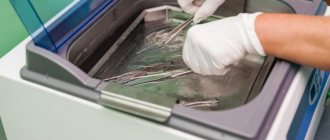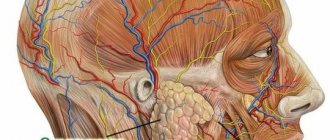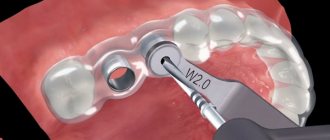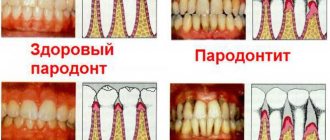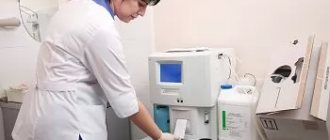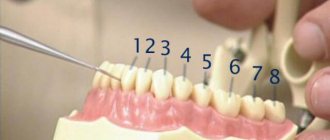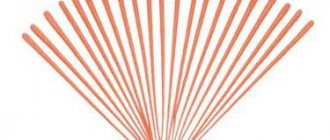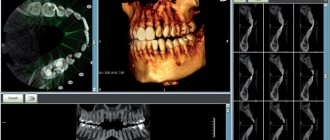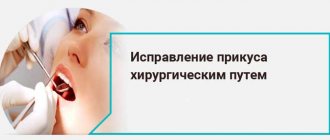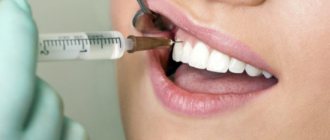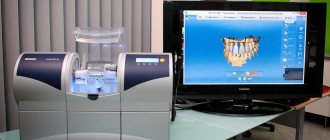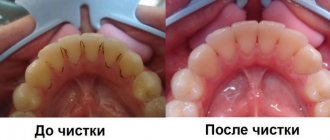33923
Many dental diseases require treatment with antibacterial agents.
Depending on the characteristics of the inflammatory process, drugs of various groups are prescribed. One of the commonly used drugs is Lincomycin.
Due to its wide spectrum of action, Lincomycin is used for drug therapy for pathologies whose development was provoked by gram-positive flora.
By changing the dosage, it is possible to ensure that the drug is present in the body in the concentration necessary to achieve a certain clinical effect.
Indications
Experts prescribe an antibacterial drug in the following cases:
- the presence of abscesses and fistulas in the oral cavity. As a rule, the pathology is characteristic of severe forms of periodontitis, periodontitis;
- development of the inflammatory process of infectious etiology in the tissues of the maxillofacial apparatus;
- severe gingivitis;
- complex tooth extraction, when there is a risk of infection of the resulting wound;
- the presence of signs of osteomyelitis against the background of inflammation of the bone and gum tissue.
Lincomycin in dentistry
The antibiotic is a water-soluble crystalline powder and is a waste product of Streptomyces lincolnensis, a soil actinomycete. Pharmaceutical companies produce several dosage forms of the drug, which are used to treat infections of the gums and teeth.
Lincomycin is active primarily against gram-positive pathogenic microflora - streptococci and pneumococci - which most often cause infections in dentistry. It acts bactericidal in high concentrations, and bacteriostatic in small concentrations, preventing protein synthesis.
Release form
The finished preparations contain a chemical form of the antibiotic such as lincomycin hydrochloride. The following types of medicines based on it can be used in dentistry:
- Capsules with an amount of active ingredient of 250 mg each, packaged in 20 pieces per pack. Intended for systemic antibiotic therapy and taken orally. It should be borne in mind that the active component is absorbed by the body by only a third, and food intake reduces this figure to 5%. That is, you need to take the medicine strictly on an empty stomach and only as prescribed by your doctor.
- A solution containing 30% antibiotic, intended for injection, which is usually made into a muscle or vein (directly into the gum - less often) in case of severe infectious-inflammatory process.
- Film (plaster) is a specific dosage form that allows the antibiotic lincomycin to be used topically in dentistry. It is a small strip of special fabric impregnated with medicine, one side of which is hydrophilic, which ensures reliable attachment to the gum, and the second is hydrophobic, for isolation from the external environment.
Lincomycin ointment is also produced, but this medication is not important for dental practice, since it is intended to combat skin infections.
Indications for use
The ability of lincomycin to accumulate in bones and destroy gram-positive pathogens ensures its frequent use in various pathologies of teeth, jaws and oral tissues. Different dosage forms are prescribed for diseases such as:
- osteomyelitis;
- acute paro- or periodontitis;
- various suppurations - abscesses and fistulas;
- inflammatory processes in soft tissues;
- ulcerative gingivitis.
In low doses, the antibiotic is often used for prophylactic purposes after dental surgery, prosthetics, or tooth extraction. Patients often ask the question whether lincomycin is effective for toothache. The drug itself does not have an analgesic effect, but by relieving inflammation and thus eliminating the cause of pain, it helps to alleviate the patient’s condition.
Contraindications
Any dosage forms of this antimicrobial drug are contraindicated in the presence of individual hypersensitivity to lincosamides. Systemic drugs (capsules, injection solution) should not be prescribed to pregnant women at any stage, lactating women, or patients with insufficient liver or kidney function. The use of a local patch is limited to certain pathological conditions of the oral cavity.
Side effects
In general, lincomycin is not highly toxic, and cases of negative reactions of the body to its use are quite rare. However, encapsulated drugs and solution can still cause some side effects:
- Digestive disorders, vomiting, stool disorders, antibiotic-associated diarrhea, candidiasis of the digestive tract, changes in the activity of certain liver enzymes.
- Reversible changes in quantitative indicators of the blood count (decrease in the number of platelets, leukocytes).
- Allergies, usually in the form of urticaria, dermatitis, anaphylaxis.
- Rapid intravenous administration may be accompanied by a decrease in blood pressure and asthenia, and at the injection site - phlebitis.
When applied topically (film, patch), no side effects are observed unless there is individual intolerance to the components of the drug.
Dosages and method of administration
Only a doctor can correctly determine in what form and according to what schedule lincomycin should be taken for inflammation of the teeth, gums, and jaw. Each drug has its own dosage schedule, depending on its effectiveness and the nature of the disease.
They are used for both preventive and therapeutic purposes. Adult patients are prescribed a short course (the duration is determined by the doctor), during which they need to take 500 mg (two capsules) of the antibiotic three times a day. The drug is prescribed to the child according to body weight: from 30 to 60 mg per kg per day, divided into three doses. In this case, the medicine must be taken strictly on an empty stomach, not forgetting about maintenance therapy with probiotics.
Injection solution
Intended for the treatment of advanced, severe forms of infection. The dosage, method (intramuscular or intravenous) and frequency of administration are determined by the attending physician. The dentist can also prescribe injections directly into the gums.
Read also: Ulcers on the palate of an adult
The most widely used dosage form in dental practice. Helps cope with infectious lesions of the mucous membrane, prevent complications after prosthetics, and get rid of gingivitis. The different properties of both surfaces ensure reliable attachment of the film and protection from external factors. How should the patch be applied?
After preliminary sanitization of the oral cavity (brushing teeth, rinsing), a piece measuring 4x1 cm with the hydrophilic (adhesive) side must be firmly attached to the desired area. It is usually recommended to leave the transparent film for several hours (6-8 hour fixation is ensured), monitoring the condition of the mucous membrane underneath it. Redness or discomfort indicate intolerance to the drug.
pharmachologic effect
The antibiotic Lincomycin has two main spectrums of action, one of which is anti-inflammatory and the other antimicrobial.
The active substance effectively fights bacteria that provoke the development of oral infections. The list of these microorganisms includes aerobic cocci and streptococci.
After using Lincomycin, its components accumulate in the tissues of the oral cavity and stop the inflammatory process. The active ingredients also prevent the proliferation of pathogenic bacteria and help accelerate recovery processes.
The drug begins active activity almost immediately, and 3 hours after administration, it blocks the development of bacteria.
However, Lincomycin hydrochloride monohydrate cannot combat viruses, gram-negative bacteria and fungi.
Antibiotic lincomycin in dentistry for toothache
The antimicrobial drug lincomycin, a member of the lincosamide group, is used in a variety of fields of medicine, including dentistry. Dental diseases are often accompanied by the development of a bacterial infection, so the use of antibiotics for both therapeutic and prophylactic purposes is often unavoidable. In addition, this drug tends to accumulate in tissues, especially in bone, which is also important for the successful treatment of dental pathologies.
Release forms. Instructions
Manufacturers have provided several options for the form of the drug, depending on the purpose of use.
Diplen-dent film
This type of Lincomycin is presented in the form of a patch, the film for which is selected by a specialist individually, depending on the condition of the oral cavity and the development of a specific problem.
The patch consists of two layers:
- the first is hydrophilic, which serves as a barrier to the penetration of bacteria and other harmful particles onto the surface of the affected area;
- the second is hydrophobic, ensuring reliable adhesion of the film and gums due to a high level of moisture resistance.
The duration of the therapeutic effect of the film is 6 hours or more, after which the patch must be removed from the oral cavity.
Possible causes of bad breath in a child and ways to eliminate it. Here we will discuss the sources of mouth ulcers and the tactics for treating them.
At this address https://dentist-pro.ru/lechenie/bolezni-polosti-rta/imudon-instrukciya-po-primeneniyu-lekarstvennogo-preparata.html we offer detailed instructions for the use of Imudon and its analogues.
Capsules
Experts recommend taking antibiotic capsules after a light snack, almost on an empty stomach. An overloaded stomach complicates the absorption of the active substance.
The daily dose of the drug for adults should not exceed 1500 mg. As a rule, Lincomycin is prescribed 2 tablets three times a day, for a course of 1-2 weeks.
If the inflammatory process is accompanied by symptoms of osteomyelitis, the duration of treatment is increased to 21 days.
The dosage for children is calculated individually, depending on the child’s weight and the severity of the disease. For 1 kg of body weight of a small patient, 30-60 mg of antibiotic should be provided. The capsules should be given to the child 1.5-2 hours before meals.
Ampoules (intramuscular and intravenous)
Intramuscular administration of the active ingredients of Lincomycin is important if it is necessary to accelerate the start of the process of antibacterial therapy.
In order to improve the well-being of an adult patient whose inflammatory process is severe, up to 600 mg of antibiotic is administered 3 times a day.
There is also the possibility of an intravenous drip regimen. Before this procedure, lincomycin is diluted with isotonic saline solution. The time intervals between injections and droppers should not be less than 8 hours.
The dosage of the drug for intramuscular administration of an antibiotic for children is calculated based on body weight. For 1 kg of child’s weight, 10-20 mg of active substance should be provided.
It is important that when injecting children, the needle is inserted as deeply as possible to prevent tissue necrosis.
The use of ointments for stomatitis in adults and children, their action and effectiveness. In this publication we will discuss how to treat stomatitis in adults with folk remedies.
Follow the link https://dentist-pro.ru/lechenie/bolezni-polosti-rta/stomatit-bpr/osobennosti-kandidoznogo.html if you are interested in competent treatment of candidal stomatitis in children.
Ointment
The local effect of the ointment is aimed at suppressing protein synthesis directly in the cells of pathogenic bacteria.
The specialist recommends using the viscous composition up to 3 times a day, applying it in a thin layer to the affected area of the oral cavity. The ointment can also be applied by application using a cotton swab.
Note! The composition may be harmful to patients who have been diagnosed with dermatomycosis and other fungal infections. In this case, you should consult a specialist before use.
Directions for use and dosage
The daily dose of Lincomycin for parenteral administration is 1.8 g, single - no more than 0.6 g. If the infection is severe, the dosage can be increased to 2.4 g, divided into three doses with an eight-hour interval. For children, the dose of lyophilisate when administered intravenously is 10-20 mg/kg, regardless of age. Lincomycin is administered intravenously only by drip, the optimal rate is 60-80 drops/min.
Lincomycin capsules are taken orally 1-2 hours before meals. For adults, the maximum dosage of Lincomycin capsules is 1-1.5 g, and a single dosage is no more than 0.5 g. For children, Lincomycin capsules should not be prescribed more than 30-60 mg/kg per day.
The duration of treatment with Lincomycin depends on the form of the disease, but generally does not exceed 1-2 weeks. The exception is osteomyelitis, when treatment can last up to three or more weeks.
If the course of treatment is long, it is necessary to monitor liver and kidney functions.
Recommendations for admission
It should be remembered that the antibiotic and its dosage must be prescribed strictly by a doctor. An overdose of the drug can result in a number of side effects.
Intravenous administration should not be carried out slowly, otherwise there is a high probability of a decrease in blood pressure, the development of vascular inflammation, dizziness and general weakness of the body.
The active ingredient of the drug can easily penetrate the placenta and breast milk, which is why pregnant women should weigh the risks to their own health and that of their baby.
Nursing mothers are advised to switch their infants to artificial nutrition at the time of treatment with Lincomycin.
If a deterioration in liver function is observed, the daily dosage of the drug should be reduced by 2-3 times. After long-term use, a thorough examination of this organ should be carried out.
It is not recommended to drink alcohol while using the drug. Alcohol accelerates the removal of the active ingredients of Lincomycin from the body, and accordingly, the antibiotic does not have the desired effect.
Side effects and overdose
During therapy for dental diseases or as a result of an overdose, the patient may experience the following consequences:
- pain in the gastrointestinal tract;
- nausea and vomiting;
- anaphylactic shock or Quincke's edema due to an allergic reaction (in rare cases);
- diarrhea;
- dermatitis and other skin diseases;
- candidiasis of the mucous membrane;
- disturbance of intestinal microflora;
- decrease in platelet count.
Advantages of the drug
Among the positive aspects of the drug are:
- The active ingredients are able to cope with bacteria that are quite resistant to many antibiotics.
- Lincomycin stops the activity of streptococci, which are a component of dental plaque and provoke the development of caries.
- Continues to be active for a long time even after the end of use.
- Prevents the development of purulent infectious processes due to its accumulation in the bone tissues of the oral cavity.
Analogs
Like almost all drugs, lincomycin has analogues that can be taken if suddenly this antibiotic does not suit you:
- Neloren - prescribed for inflammation of soft tissues and the development of skin infections of various origins. Produced by the manufacturer in the form of tablets and ampoules for injection.
- Ecolinkom is effective for the treatment of sepsis, signs of osteomyelitis, and wound infections.
- Clindamycin is prescribed to eliminate infectious and inflammatory processes and osteomyelitis. Tablet release form.
- Lincocin is the closest analogue of Lincomycin, which has an anti-inflammatory and antibacterial spectrum of action. Available in the form of tablets and ampoules for injection.
To learn about the cases in which antibiotics are recommended in dentistry, watch the video.
Choice of medication for illness in children
Antibacterial therapy in the treatment of childhood tonsillitis is the fastest and most effective way to get rid of the disease. There is no point in taking the drug when treating tonsillitis of fungal or viral etiology, but for bacterial tonsillitis, such therapy will give a positive result.
Penicillin series
These drugs can be classified as gentle. They effectively kill types of bacteria such as streptococcus. When treating sore throat in children, the doctor may prescribe the following penicillin antibiotics:
- Augmentin,
In the photo - Augmentin - Flemoxin solutab,
- Ecoball,
- Amoxicillin,
- Hiconcil,
- Amosin.
It is advisable to take the above medications when treating tonsillitis at an early stage of development. To protect the child from developing allergies, it is necessary to combine the intake with antihistamines.
Macrolides
These antibiotics are the second most effective in treating tonsillitis. The most effective group includes:
- Macropen,
In the photo - macropen - Zinatsef,
- Azitral,
- Zitrolide,
- Azithrus,
- Hemomycin,
- Azithromycin.
The drug Summed is very popular. It has a wide spectrum of action. Very effective in treating the respiratory tract. The convenience of the medication is that it is taken once a day, and the course of therapy is much shorter. Available in capsule and tablet formats. For children under one year of age, the drug is prescribed in the form of a suspension.
But is it possible to warm the throat with a sore throat, and how to do it correctly, this article will help you understand.
It will also be interesting to know whether furatsilin helps with sore throat.
How to use Flemoxin Solutab for sore throat in adults, and how effective this remedy is, is described in great detail in this article:
Maybe
